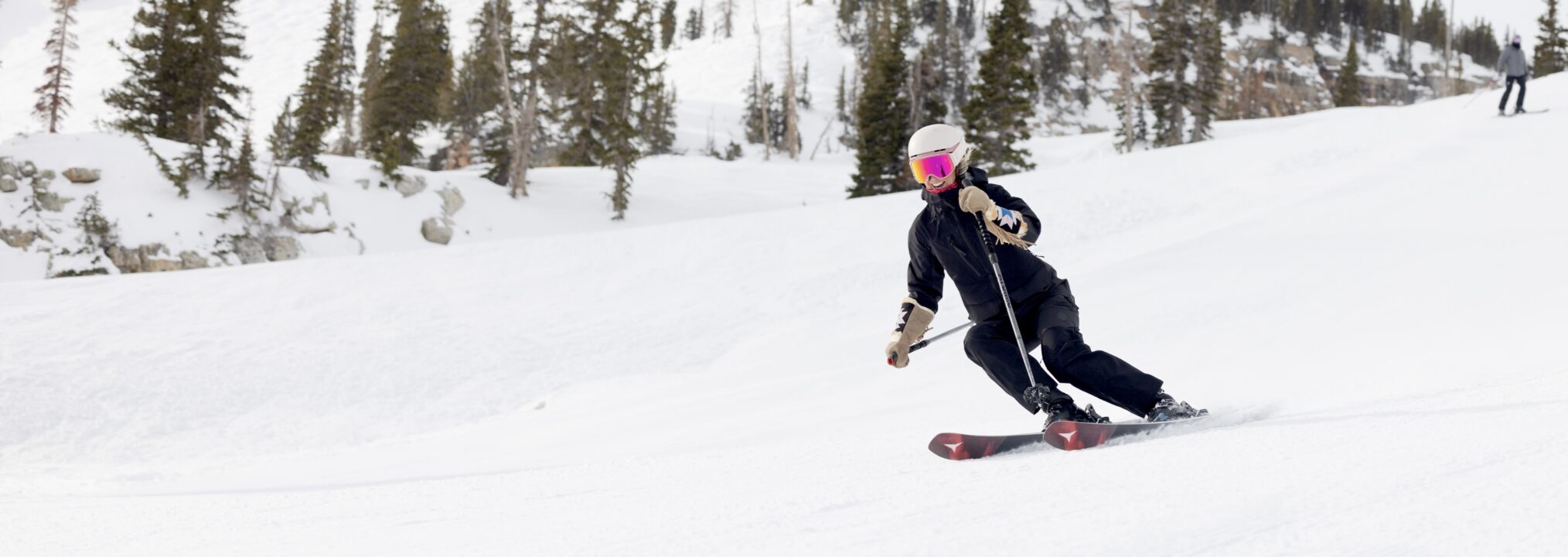Is Skiing Dangerous?

March 15, 2024
We have been struck (shocked really) by several articles recently stressing that skiing is a dangerous sport. We would expect such sensationalism and slander from the New York Post or the National Enquirer. But these headlines have come from what we consider respectable publications – think Outside Magazine and The Atlantic. Yes, we know we recently wrote an article on the risk of in-bounds avalanches, but our intent was to highlight an issue that expert skiers might not focus on and suggest some easy safety precautions they can adopt. It wasn’t to suggest that skiing is inherently dangerous for the masses.
While we recognize the appeal of attention grabbing headlines, and have been guilty of using them ourselves occasionally, we really were thunderstruck by the Outside and Atlantic headlines. Outside: “Skiing Isn’t Just a Luxury Experience. It’s a Dangerous Sport.” and The Atlantic: “Risking Their Lives to Ski While They Can“. We will admit that the headlines worked – we immediately read both articles. But we are dismayed that these publications would stoop to this level. Of course the articles were more nuanced than the headlines but still…
We give the Atlantic a bit more of a pass on this, given they are not narrowly focused on outdoor activities. Nonetheless, their article seemed particularly off the mark. One of the leading statements in the piece states, “Show me an experienced winter recreationalist, and I’ll show you someone who has slipped, skidded, and crashed their way to a broken tailbone or torqued knee, and more likely than not a concussion or two.” The article correctly points out that forces like climate change and the pandemic have altered the outdoor and ski industry landscape. The former is further limiting our access and the latter is allowing remote workers to overcrowd towns and slopes. But the article relentlessly hypes the dangers of our winter passions and leaves one with the sense that instead of stepping outside in the winter one should curl “up with a book or Netflix when the weather turns cold.”
The Outside article is even more frustrating. We love the publication, but we don’t give them a pass on expecting high quality reporting on “outside” activities. As we did, it highlights recent fatal in-bounds slides. But its emphasis is essentially that ski areas should stress the dangers of the sport more and marketing less. It commends certain areas for using the term “area” to describe themselves instead of using the term “resort.” Really guys? You really wrote that? To give them credit though, the article also highlights the need for skiers in-bounds to wear beacons and bring avi gear when terrain and conditions warrant. Almost makes up for their area/resort faux pas.
So…is skiing dangerous? The answer is NO! Ok, skiers injure their knees and there are collisions, blah blah blah, but the dangers are no different than any fast moving sport and certainly safer than others. We will spare you links to the many internet sites that support our position, but Unofficial Networks had an interesting 2022 piece pointing out that one is more likely to die canoeing than skiing, and your likelihood of dying while skiing is less than one in a million (Statistically, This Is The Most Dangerous Thing You Can Do Skiing). Perhaps some of you might say death shouldn’t be the standard, but the article also points out that estimates are that only 2 injuries occur for every 1,000 skiers.
There are some common sense steps to reduce one’s risk of serious injury. There is of course the Skier’s Responsibility Code which beginners should learn and the rest of us should review occasionally. But we think perhaps the two most important principles that don’t get enough attention relate to trees – hitting them and suffocating next to one. Don’t ski alone in the trees – on average five skiers die in the U.S. every year alone in tree wells (forms around the base of a tree, below its branches where the snow doesn’t accumulate). There don’t seem to be accurate numbers on injuries due to hitting trees while skiing in the trees but we have to assume the numbers aren’t super small. And then as the Unofficial Networks article points out, the most typical cause of fatalities is the intermediate skier veering off a blue rated groomed trail and hitting a tree. Speed is the most common culprit in those situations.
Be Well; Ski Well.

